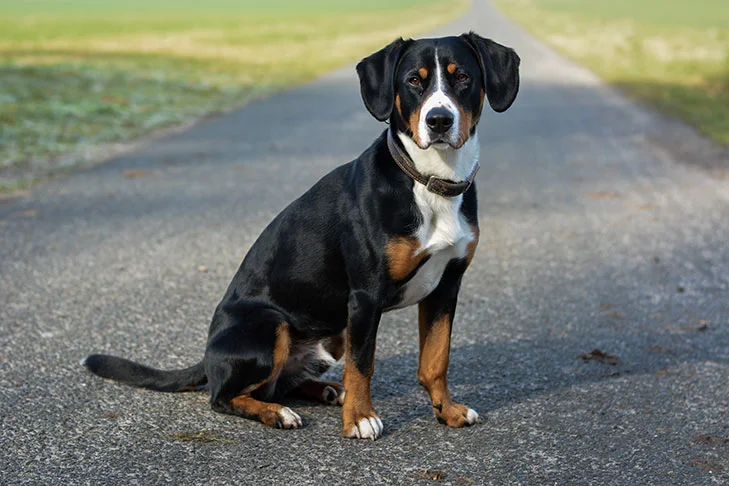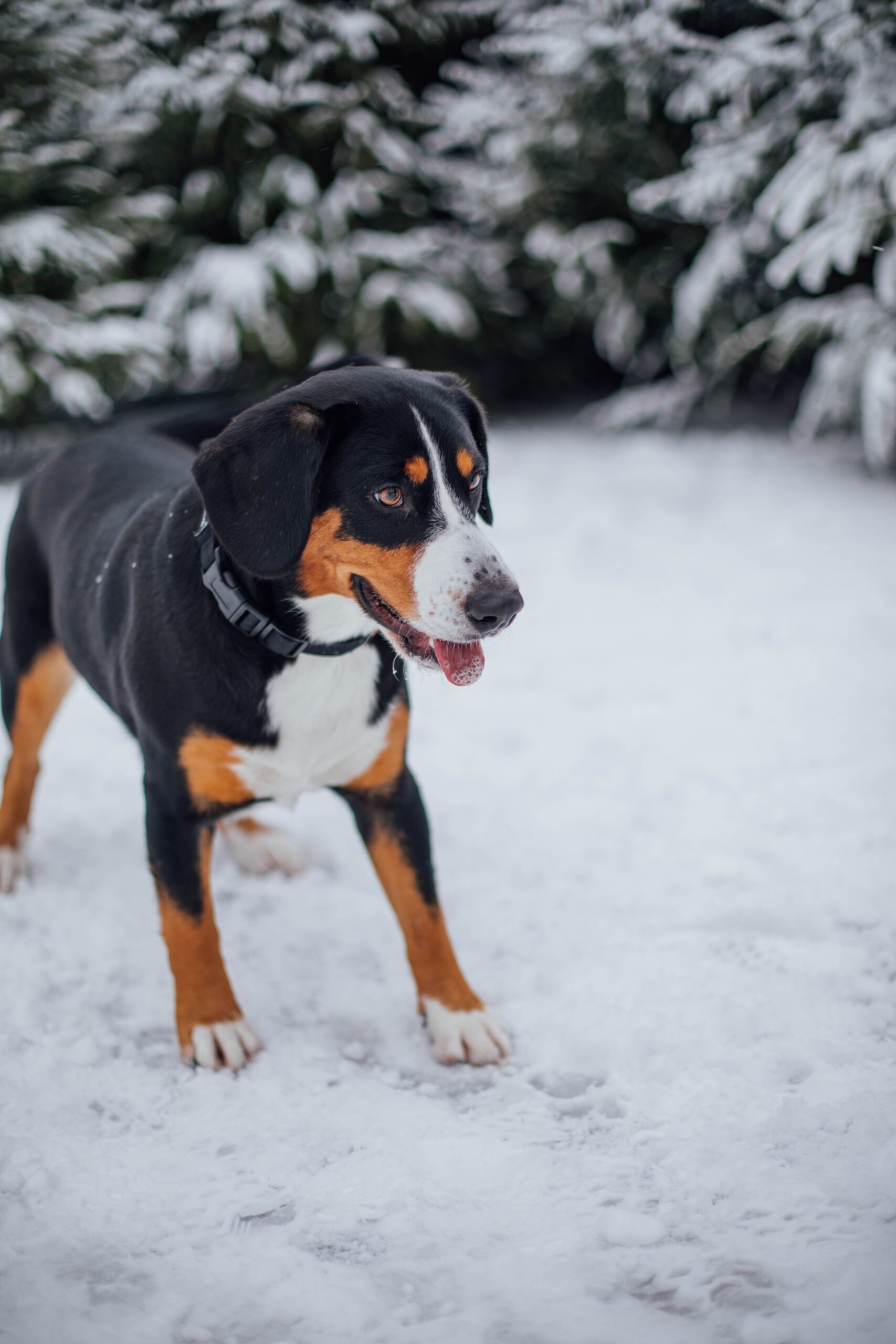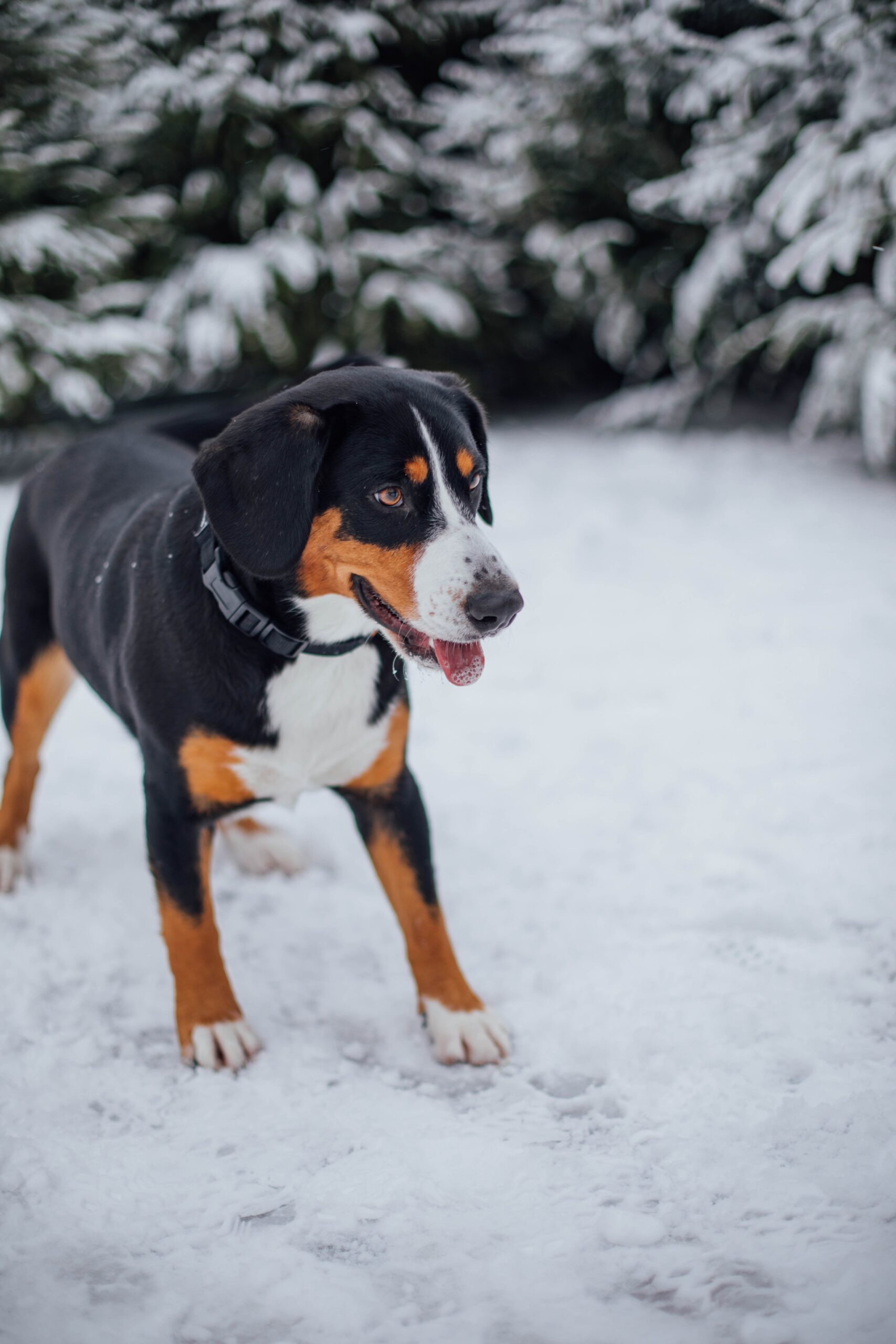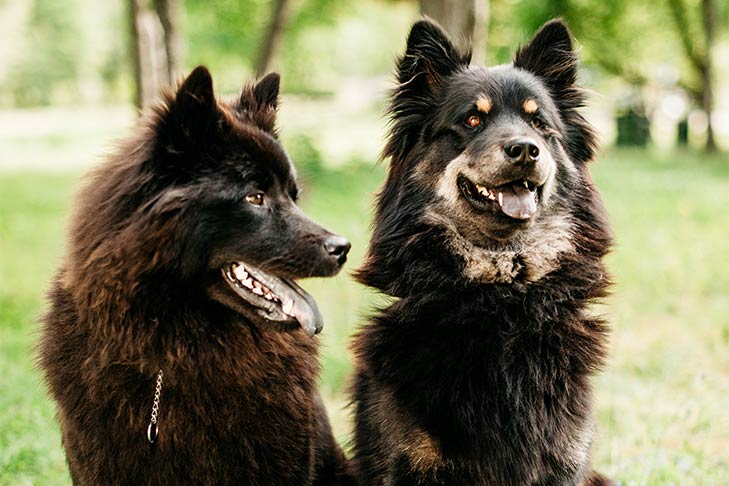The Entlebucher Mountain Dog, also known as the tricolor “Laughing Dog” of the Swiss Alps, is a tough and tenacious livestock mover. These vivacious, active workers and athletes are independent problem-solvers and happiest when they have a task to complete. Cattle dogs with long, powerful backs called Entlebucher Mountain Dogs (ENT-leh-boo-cur) stand between 16 and 21 inches tall at the shoulder. They have alert, pleasant faces, small, strong legs, and a stunning black, white, and tan coats. Entles are renowned for their dexterity, poise, and unbridled excitement. Entles are watchful guardians of their two- or four-legged “herds,” and when socialized appropriately, they are dependable and dependable playmates for older children.
To reach their greatest potential, energetic Entles need a lot of exercises, family time, and guidance. This powerful, self-assured, go-go herding dog may be intimidating to inexperienced owners. Entlebuchers are good dogs; they’re clever, zesty, and joyful, but they’re not for everyone.







 Health
Health Grooming
Grooming Exercise
Exercise Training
Training Nutrition
Nutrition